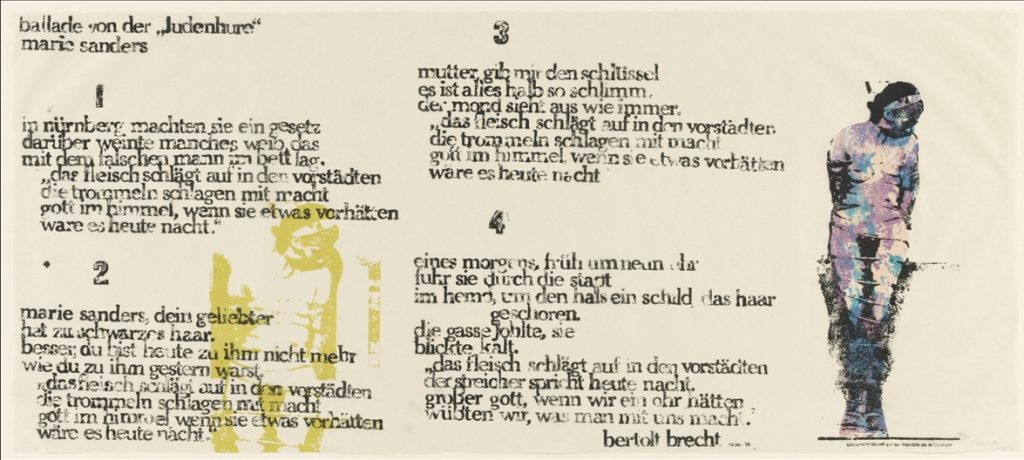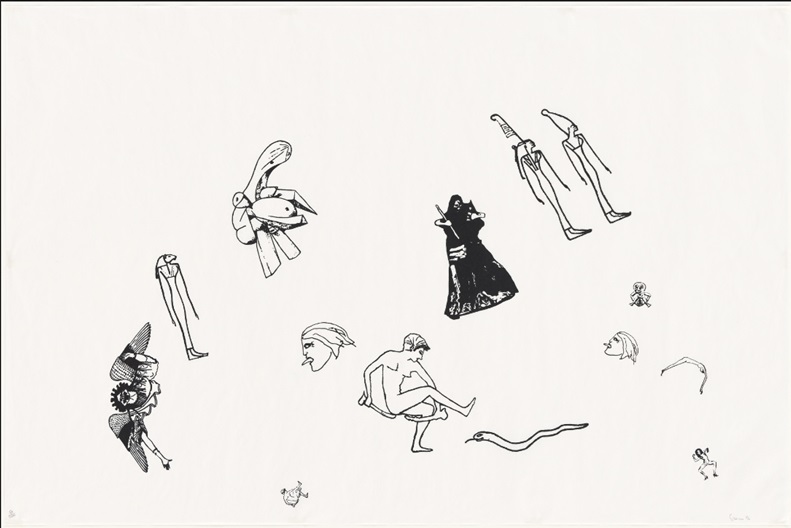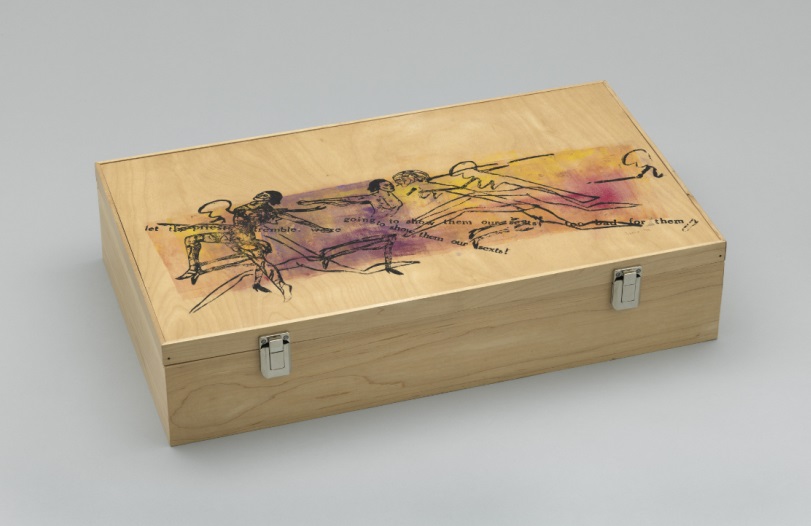Nancy Spero, a famous American visual artist who lived from 1926 to 2009, made significant contributions to modern art, particularly in feminism and political activism. She was born in Cleveland, Ohio, and attended the Chicago School of the Art Institute.
In Spero’s work, themes of gender, power, violence, and the human body were often tackled. As a part of the feminist art movement, which addressed socially and politically relevant subjects and challenged traditional representations of women in art, she became well-known in the 1960s and 1970s. Spero created powerful narratives and eye-catching visual statements by often fusing text and images in his collage, drawing, and printmaking works.
Her “Violence Series” (1966–1970), a response to the Vietnam War, is her most well-known piece of art. In her latter works, she also addressed apartheid, war, and violations of human rights. Spero was renowned for her unafraid investigation of challenging issues and dedication to using art to make social commentary.
Throughout her career, Spero held multiple exhibitions and gained recognition for her avant-garde and socially concerned artwork.
In 2010, the Museum of Modern Art in New York organized a thorough exhibition of her work to recognize her impact on modern art and her dedication to utilizing her creative practice to draw attention to critical social issues.
Feminist Art Movement and Political Activism

Spero pioneered the feminist art movement in the 1960s and 1970s. Her work aimed to draw attention to issues related to gender, power, and women’s experiences while also challenging traditional representations of women in the arts. She used her career as a platform to question social norms and advocate for women’s rights. Spero’s artistic perspective was inextricably linked to political activity. She addressed several significant sociopolitical issues, including human rights abuses, brutality, apartheid, and war. Her “War Series” and other works demonstrated her commitment to using art for social criticism and critique.
Various mediums, including collage, drawing, and printmaking, characterized Spero’s artistic practice. Her innovative use of these mediums, often combined with text and symbolic imagery, created visually striking and emotionally resonant works that pushed the boundaries of traditional artistic expression.
Spero was fortunate to witness and participate in the evolution of the art world during her multi-decade career. Her enduring influence and reputation were made possible by her years of tenacity and dedication to her artistic vision. Spero regularly included marginalized voices—such as those of women and other politically persecuted groups—in his artwork. She gave many neglected or overlooked people a visual voice, which helped to expand the definition of art to embrace a more extensive range of perspectives.
Feminism in Nancy Spero’s artwork

Nancy Spero played a significant role in the feminist art movement of the 1960s and 1970s, and feminist themes are strongly present in her work. Her work addressed gender, power, and women’s experiences while challenging traditional representations of women in the arts. Spero was often influenced by mythology from antiquity, particularly those featuring female figures. However, she also went against the grain, using myths to analyze contemporary issues and dispel unfavourable preconceptions about women.
Spero frequently challenged stereotypes and preconceived assumptions by depicting the feminine figure in his paintings in unconventional ways. Instead of idealizing women, her depictions of them explored topics of objectification and societal expectations in a visceral, passionate, and sometimes angry way. Spero used her work to convey the struggles and experiences that women face. Her depictions of the effects of injustice, violence, and war on women often emphasized the resilience and fortitude of women in the face of hardship. She contributed to a more extended conversation on women’s rights and social justice.
Her usage of collage heavily influenced Spero’s feminist style. She created complex, multilayered works using symbols, visuals, and broken words. This approach symbolically illustrated the fragmentation of women’s identities and social roles. Spero’s more significant work often addressed feminist issues, albeit it wasn’t exclusively concerned with them. Her engagement with political issues such as the Vietnam War and apartheid demonstrated her commitment to social justice and her understanding of how these issues disproportionately affected women.

Spero challenged the dominant masculine gaze in art history with his works. She created art that portrayed women in various powerful ways, which helped the feminist movement to reimagine how women are portrayed in visual culture. Spero collaborated with other artists a lot, especially female artists. This collaborative approach echoed feminist notions of solidarity and collective action by emphasizing the importance of community and shared experience.





